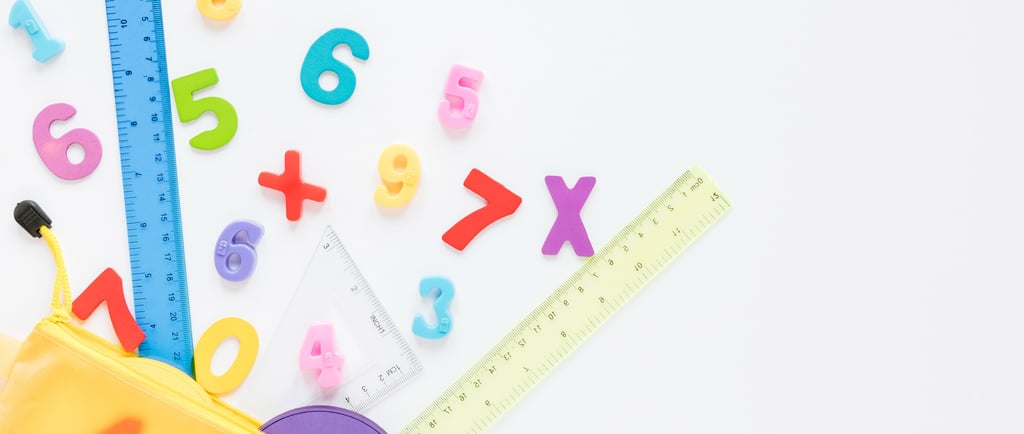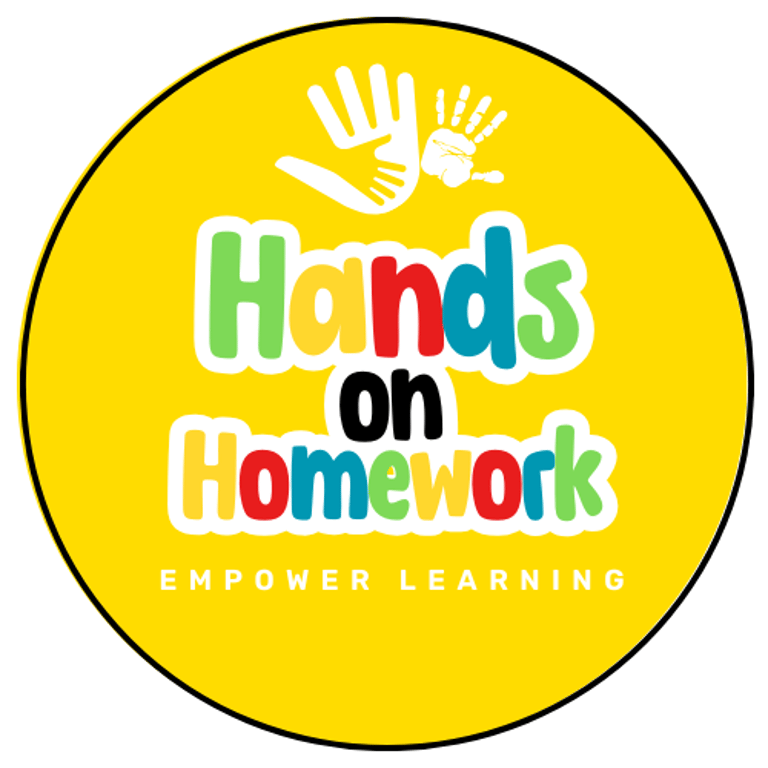What Do They Learn in Math?
curriculum sneak peek
CURRICULUM SNEAK PEAK
2/16/20253 min read


What Do They Learn in Math?
Math in elementary school provides children with essential skills in problem-solving, logical thinking, and pattern recognition. These foundational skills support their ability to understand more complex concepts in future grades and apply math to real-life situations.
Here's a breakdown of a basic math curriculum for early elementary grades.
Kindergarten
Focus: Building foundational number concepts, simple counting, and recognition.
Numbers & Counting:
Recognize and write numbers 0-20.
Understand the concept of more, less, and equal.
Shapes & Geometry:
Identify basic shapes (circle, square, triangle).
Explore spatial relationships (up, down, beside, near).
Measurement:
Understand basic comparisons like bigger/smaller, taller/shorter, heavier/lighter.
Introduce basic time concepts (morning, afternoon).
Patterns:
Identify and replicate simple repeating patterns (ABA, ABC).
activities link to patterns post and game on amazon)
Pre-1A
Focus: Number sense, basic operations, shapes, and measurements.
Numbers & Counting:
Recognize numbers 0-10.
Count objects (up to 10) and match the number with the quantity.
Understand the concept of "more" and "less."
Compare numbers (greater than, less than, equal to).
Skip counting by 2s, 5s, and 10s.
Patterns:
Recognize, create, and extend simple patterns (e.g., red, blue, red, blue).
Shapes & Geometry:
Identify and describe 2D shapes (circle, square, triangle, rectangle) and 3D shapes (sphere, cube, cylinder).
Understand positional words (in, out, above, below, next to).
Basic Measurement:
Measure length using nonstandard units (e.g., paperclips, blocks).
Understand concepts of time (morning, afternoon, night) and basic time (minutes, hours).
Addition & Subtraction:
Understand addition and subtraction by combining and separating sets.
Solve simple addition and subtraction problems (e.g., 3 + 2 = 5).
activities( LInk to basic addition games)
1st Grade
Focus: Building on basic arithmetic, exploring place value, and introducing addition and subtraction strategies.
Numbers & Place Value:
Count to 120, starting at any number.
Understand the place value of digits (ones, tens).
Read and write numbers up to 100.
Compare two-digit numbers (greater than, less than, equal to).
Addition & Subtraction:
Add and subtract within 20, using strategies like counting on and making tens.
Solve word problems involving addition and subtraction within 20.
Measurement & Data:
Measure lengths using nonstandard units (e.g., paper clips, cubes).
Tell and write time to the hour and half hour.
Collect, organize, and interpret simple data (using tallies or bar graphs).
Geometry:
Identify and describe 2D shapes (circle, square, triangle, rectangle, hexagon).
Identify solid shapes (cube, cone, sphere, cylinder).
Understand symmetry.
activities (link to word problem sheet and problem scene book)
2nd Grade
Focus: Developing fluency with addition and subtraction, understanding place value, and introducing multiplication concepts.
Numbers & Place Value:
Count and skip count by 2s, 5s, 10s, and 100s.
Understand place value up to 1000 (ones, tens, hundreds).
Compare and order numbers up to 1000.
Round numbers to the nearest ten or hundred.
Addition & Subtraction:
Add and subtract within 100 (including two-digit numbers).
Solve word problems involving addition and subtraction within 100.
Introduce the concept of fact families and strategies for solving problems.
Multiplication (Intro):
Begin learning the concept of multiplication as repeated addition.
Understand and solve multiplication problems with numbers 2, 5, and 10.
Measurement & Data:
Measure lengths using rulers (inches and centimeters).
Tell time to the nearest 5 minutes.
Solve problems involving money (understanding coins and their values).
Interpret bar graphs and picture graphs.
Geometry:
Recognize and draw 2D shapes and understand their properties (number of sides, vertices).
Understand basic symmetry and partition shapes into equal parts.
activities(link money games post)
3rd Grade
Focus: Strengthening addition, subtraction, and multiplication skills, exploring fractions, and introducing division.
Numbers & Place Value:
Understand place value up to 10,000.
Compare and round numbers to the nearest ten, hundred, and thousand.
Use place value to add and subtract larger numbers.
Addition, Subtraction & Multiplication:
Add and subtract within 1000.
Master multiplication facts up to 10x10.
Begin to use the distributive property to multiply (e.g., 4 x 6 = (4 x 3) + (4 x 3)).
Division (Intro):
Learn basic division as the inverse of multiplication.
Solve simple division problems (within 100).
Fractions:
Understand fractions as part of a whole (e.g., 1/2, 1/3, 1/4).
Identify and create simple equivalent fractions (e.g., 2/4 = 1/2).
Compare and order fractions with the same denominator.
Measurement & Data:
Measure length in both inches and centimeters.
Tell and write time to the nearest minute.
Solve problems involving money (making change, using coins and bills).
Interpret data from bar graphs and line plots.
Geometry:
Understand the properties of 2D shapes (parallel sides, angles).
Identify and classify quadrilaterals (squares, rectangles, parallelograms).
Explore the perimeter and area of simple shapes (rectangles).
activities:(link to place value game ideas)
Overview:
Kindergarten: Counting, simple addition and subtraction, basic shapes, and measurement.
Pre-1A: Basic number recognition, simple counting, patterns, and understanding shapes.
1st Grade: Number sense, addition and subtraction within 20, basic geometry, and simple data.
2nd Grade: Place value, addition/subtraction within 100, introductory multiplication, basic measurement and fractions.
3rd Grade: Place value up to 10,000, multiplication, division, fractions, and more complex geometry.
This curriculum builds a strong foundation for mathematical thinking, focusing on problem-solving and reasoning skills.
